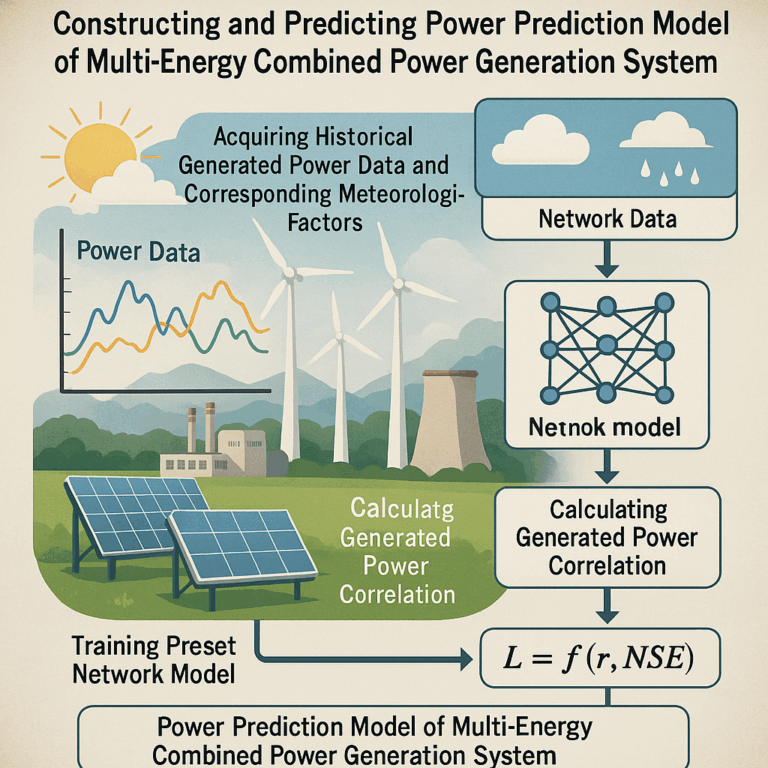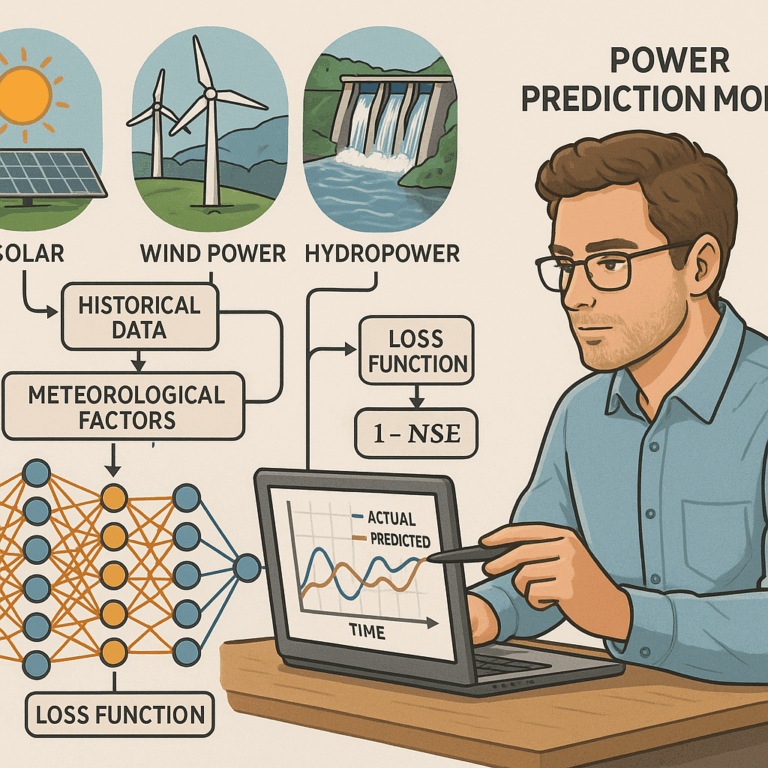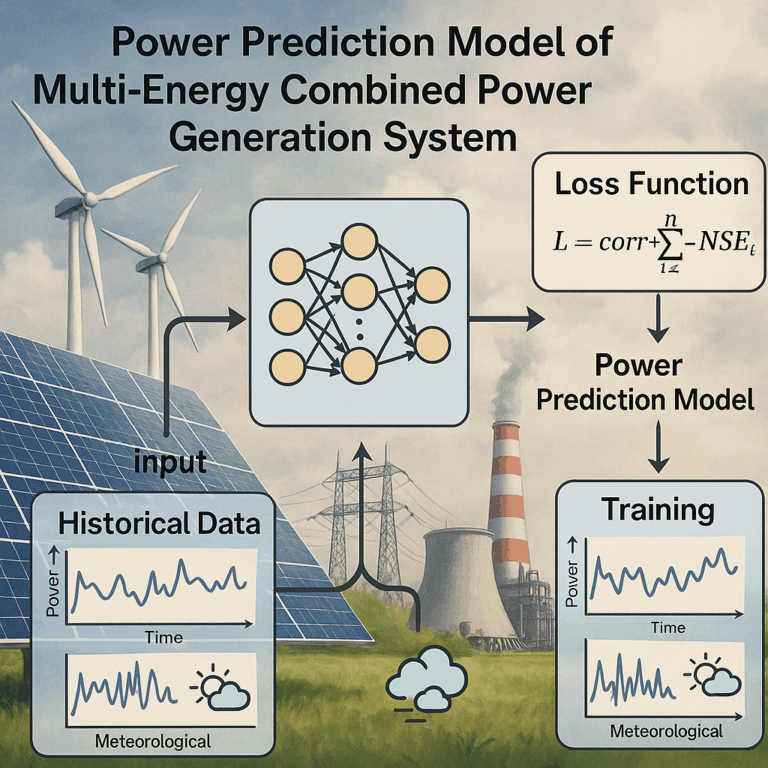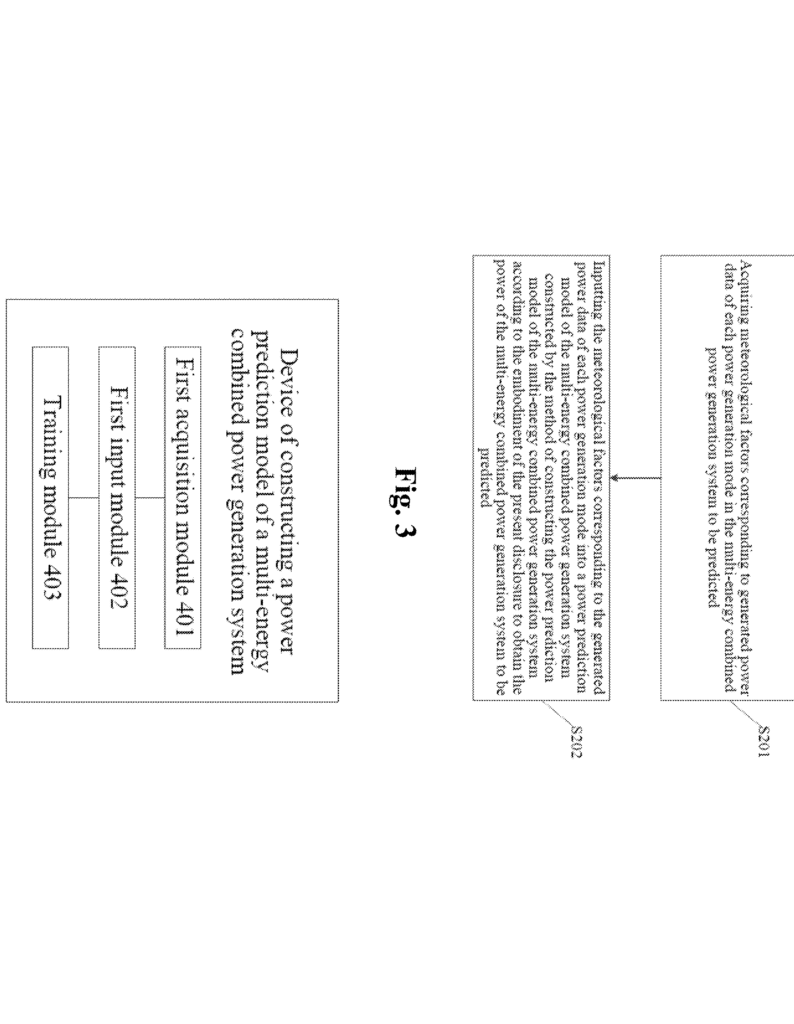Invented by ZHANG; Wei, LI; Mengjie, ZHANG; Lu, HUANG; Kangdi, LIU; Ruikuo, LIU; Zhiwu, CHINA THREE GORGES CORPORATION

Power grids are changing fast. As we use more clean energy like solar, wind, and water, it becomes harder to know exactly how much electricity will be made at any given time. A new patent application brings a smart way to predict power output when lots of different energy sources are combined. In this article, we will break down what this patent covers, why it matters, and how it works in very simple words.
Background and Market Context
Electricity is what keeps our homes, schools, and businesses running. For a long time, most of our electricity came from burning coal, oil, or gas—things that pollute the air and are running out. Now, more countries are using clean energy from sun, wind, and water to make electricity. This is good for the planet but brings new problems.
Unlike coal or gas, wind and solar power are not steady. The sun does not always shine, and the wind does not always blow. Water power, like from dams, can also change when there is more or less rain. When these energy sources are used together, it helps balance things out. This mix of energy sources is called a multi-energy combined power generation system.
But even with this mix, it is still very tricky for electric companies to know how much power they will have tomorrow, next week, or even next hour. If they guess wrong, it can lead to blackouts or wasted energy. Power companies need good predictions to plan how much power to send out and to keep the lights on for everyone.
Until now, most prediction tools only looked at one energy source at a time. For example, there are special tools just for solar power or just for wind power. These tools use smart computer programs (like deep learning or neural networks) to look at old data and try to guess what will happen next. But when different energy sources are mixed together, the old tools do not work as well. The sources can affect each other in ways that are hard to predict. For example, when it is sunny, it might not be windy, or when there is a lot of rain, the water power might go up but solar power goes down because of clouds.

Power companies, grid operators, and even governments are all looking for better ways to predict how much power will be made when these clean energy sources are combined. A good prediction system means fewer surprises, more reliable electricity, and better use of clean energy. This new patent aims to fill that gap.
Scientific Rationale and Prior Art
To understand what makes this invention special, let’s start by looking at how power prediction has been done before. In the past, tools for predicting power from renewable energy mostly focused on one type of energy at a time. For example, a tool might look at past sunlight and temperature to predict solar power, or at wind speed to predict wind power. Some tools use weather forecasts and complicated math to try to make these guesses better.
The problem with these older tools is that they do not talk to each other. They do not see the ways that different energy sources can affect each other. For instance, if there is a storm, it could mean more water for a dam (good for hydropower), but also more clouds (bad for solar power). If winds are strong, wind turbines make more power, but that might also push away clouds, helping solar panels. These links are not simple, and the old tools do not catch them.
Some smart scientists tried to use computer models that can learn patterns from lots of data. These models, like neural networks, can find hidden connections between weather and power. But even these models usually look at just one energy source at a time. When it comes to combining solar, wind, and water, the models still have a hard time.
Another problem is that real-world data is messy. Sometimes sensors break, or data goes missing. Sometimes there are strange spikes or drops in power that are not normal. Old models often get confused by this bad data, leading to worse predictions.

To measure how good a prediction is, experts use something called the Nash-Sutcliffe Efficiency (NSE) coefficient. This is a simple way to see if the predicted numbers are close to the real numbers. If the NSE is close to 1, the model is doing well; if it is close to 0 or even negative, the model is not just bad—it is worse than simply guessing the average.
The new patent builds on all these ideas. It brings together data from different energy sources, cleans up bad data, and uses a special loss function that mixes two things: how well the model predicts each source (using NSE), and how well it captures the way different sources are linked (using correlation). This is a step forward from old models that only looked at one thing at a time.
Invention Description and Key Innovations
Now let’s dive into what this patent actually covers and why it is different from what came before.
The invention is a smart method and device for predicting how much power a mixed energy system will produce. It works in several clear steps:
First, it collects old data about how much power each source (like solar, wind, or water) has made in the past. At the same time, it grabs the weather data that matches those times—things like rain, wind speed, sunshine, and temperature.

Before using the data, the system checks for bad or missing entries. If there is missing data, it can delete those points, or if there is strange data, it fixes it using smart methods. For example, if a sensor was broken for a few hours, the model can use the numbers before and after to guess what the missing data should be. This step is important so that bad data does not confuse the prediction model.
Once the data is clean, it is fed into a computer model called a “preset network model.” Usually, this is a type of neural network, such as a Long Short-Term Memory (LSTM) model, which is very good at learning from time-based data. The model looks for patterns in how weather affects each type of power source, and also how the different sources relate to each other.
What makes this invention special is its loss function. Think of a loss function as a way for the model to know if it is making good or bad guesses. The loss function in this patent has two big parts:
1. The Nash-Sutcliffe Efficiency (NSE) part checks if the model’s predictions are close to what really happened for each type of energy.
2. The correlation part checks if the model is getting the relationships between the different energy sources right. For example, if solar and wind usually go up and down together, the model needs to catch that.
Both parts are put together in a way that if either the prediction or the relationship is off, the model will know and will try to get better. Special penalty rules make sure the model does not ignore the links between sources, even if it could make a better guess for just one type.
The model is trained using this loss function until it cannot get any better. The training data is split into two parts: one for teaching the model (training set) and one for checking if it learned well (validation set). The model’s settings (like how many layers it has, how fast it learns, or how big each batch of data is) can be adjusted to find the best set-up for the cleanest predictions.
If the system is used for a real-world mix like water, wind, and solar, it even includes special steps for hydropower. It collects extra information like water flow, storage, and dam rules. It uses this to calculate exactly how much power the dam should be able to make under different conditions.
Once the model is trained, making a prediction is simple. The system takes in the weather forecast for tomorrow (or the time you want to predict), puts it into the model, and gets a prediction for how much power each source (and the whole system) will make. This can help power companies plan ahead, make fewer mistakes, and use more clean energy without worrying about surprises.
The patent also describes devices that can run this method. These can be computers, servers, or even special chips. The program can be stored on a hard drive, memory stick, or even in the cloud. This makes it easy for power companies to use the tool in many different places or move it around as needed.
In short, this invention is a smart, flexible, and careful way to predict power from many energy sources at once. It is designed to be easy to use, forgiving of bad data, and ready to help real companies keep the lights on with clean energy.
Conclusion
Clean energy is the future, but using it well means being able to predict how much power will be made, even when the sun, wind, and water change all the time. This new patent offers a clever way to combine data, clean up mistakes, and make better guesses about tomorrow’s power. By linking together the strengths of solar, wind, and water—and catching how they affect each other—this method helps power companies plan ahead, cut waste, and use more clean power. It is a big step forward for anyone who wants a brighter, cleaner, and more reliable energy future.
Click here https://ppubs.uspto.gov/pubwebapp/ and search 20250231539.
